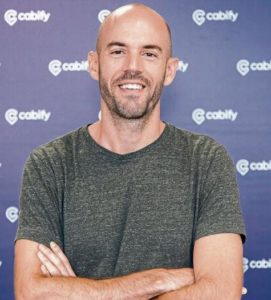Giphy : Giving Life to People’s Emotions in Gifs
The internet has forever changed the way we communicate, shop, talk, interact and consume media. In short, it has had an impact on almost all spheres of our lives. But the one field that it has had maximum impact is the way we interact and communicate with people. Not only has the internet helped in making the world a smaller place, but it has also made edits on our language and speaking style. Long gone are the days when people would write paragraphs expressing their worry, concern or even love. Short forms, video clips, question tags and hashtags have proliferated into our vocabulary, making it easier than ever before to express how we are feeling.
But nowhere is this shift more apparent than in the usage of GIFS, which are short animated images that help people describe exactly how they feel. GIFs can capture all emotions, from our hatred for Mondays to our love for MS Dhoni. Seven years ago, Alex Chung and Adam Leibsohn utilized this need for expression to found Giphy, which now, boasts around 300 million active users. Here’s a look at their story.
The Founders
Alex Chung is a multi-talented individual holding degrees in philosophy, computer engineering, and graphic design. He started his career at Intel, beginning as a hardware engineer, and then worked his way up and led a team working on interactive television. He then helped found some service-based companies, worked with MTV, and then quit all his jobs, to take some time off for himself.

That was when he met his long-time friend Jace Cooke for breakfast and talked about how much he loved GIFs. The duo was discussing how GIFs had the potential to become the new medium of communication in the future when they realised that there was potential in this idea. When they decided to search for GIFs, they realised that even Google couldn’t help them in finding the right one. Within a week, Chung came up with a basic algorithm that would help search for GIFs and soon after the page had over 30,000 views and the duo received a $1 million offer from Betaworks. And just like that, GIPHY was born.
Founding Giphy
Alex Chung and Jace Cooke founded GIPHY in February 2013. Initially, the software served as just a search engine for GIFS and attracted more than a million users within a week. This inspired the duo to set their targets higher and expanded into other ventures.
In August of the same year, the software gave users the permission to embed and share GIFs on Facebook, leading to a massive surge in users and visibility. This led them securing a spot in the Top 100 Websites of 2013 list published by PCMagazine annually. In November, the duo integrated GIPHY with Twitter and gave users the ability to share GIFs via URL. By May of the following year, GIPHY had started trying to gain investors and successfully raised $2.4 million through investors such as Quire, CAA Ventures and Lerer Hippeau Ventures. By the same time next year, they raised another $17 million, Lightspeed Venture Partners and General Catalyst being the major investors.
By March 2015, the company had acquired a GIF messenger known as Nutmeg, and this helped them make their way into the mobile market. The merger coincided with the Facebook Messenger‘s development plan, and soon, GIPHY was a part of the messenger leading to even more visibility and users. In August 2015, the duo launched their own app called GIPHY Cam, which enabled users to create, edit and share gifs on multiple platforms.
The Success
By 2016, GIPHY was worth over $300 million and was able to raise an additional $55 million as by then, it had hit the 100 million user mark. GIPHY was helping in the sharing of over 1 billion GIFs a day, and users were watching GIF content for up to 2 million hours every single day. A year later, their user base hit the 200 million mark, and when the API and website were taken together, user count went above 250 million. All in all, the company grew 100 times in 2013 when it started, 20 times the following year, and about five times in the next three years!
Recently, Chung announced that the company was further expanding, now trying its hand at advertising. Giphy will soon be rolling out an advertising scheme that works differently from the one used by Google, which relies on search history to display relevant advertisements. GIPHY’s model plans to embed ads in private messages as their service is already a part of most messaging platforms.
With partnerships with over 200 companies, some of them as large as Disney, Tumblr, Pepsi and Universal Studios, it goes without saying that GIPHY has grown to become an industry giant. The company now employs over 80 people and is the front-runner in the race to controlling the GIF market.

Being a cinephile with a love for all things outdoorsy, Athulya never misses a chance to chase inspiring stories or poke fun at things, even when the subject is herself. Currently pursuing a degree in mechanical engineering, she is someone innately interested in technical and scientific research. Music reviews and op-eds define her as they allow her to explore different perspectives. Though sometimes she thinks she makes more sense playing the guitar than she does while writing.











